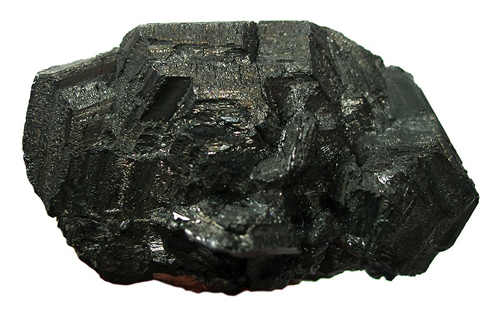The Mineral pearceite

Pearceite is an uncommon mineral containing silver and copper in its structure. It forms a series with Polybasite, with Pearceite being the arsenic-rich member and Polybasite being the antimony-rich member. It is often not possible to visually distinguish these two minerals from each other. Pearceite is named in honor of Dr. Richard Pearce (1837-1927), a Cornish-American chemist from Colorado.
Chemical Formula
[(Ag9CuS4)][(Ag,Cu)6As2S7]
Color
Dark gray to nearly black. May have occasional internal red reflections.
Crystal System
Monoclinic
Properties
Streak
Black. May have a red tinge. |
Hardness
2.5 - 3 |
Transparency
Opaque |
Specific Gravity
6.0 - 6.2 |
Luster
Metallic |
Cleavage
1,3 |
Fracture
Uneven |
Tenacity
Brittle |
Uses
Pearceite is as an ore of silver.
Noteworthy Localities
Pearceite is not a common mineral. Worldwide localities include Měděnec, Chomutov District, Bohemia, Czech Republic; the Uchucchacua Mine, Oyon Province, Lima Department, Peru; and the San Juan de Rayas Mine, Guanajuato, Mexico. In the U.S., Pearceite has come from the Mollie Gibson Mine, Aspen, Pitkin County, Colorado; and from Neihart, Cascade Co., Montana.
Distingushing Similar Minerals
Polybasite - Indistinguishable without complex methods.